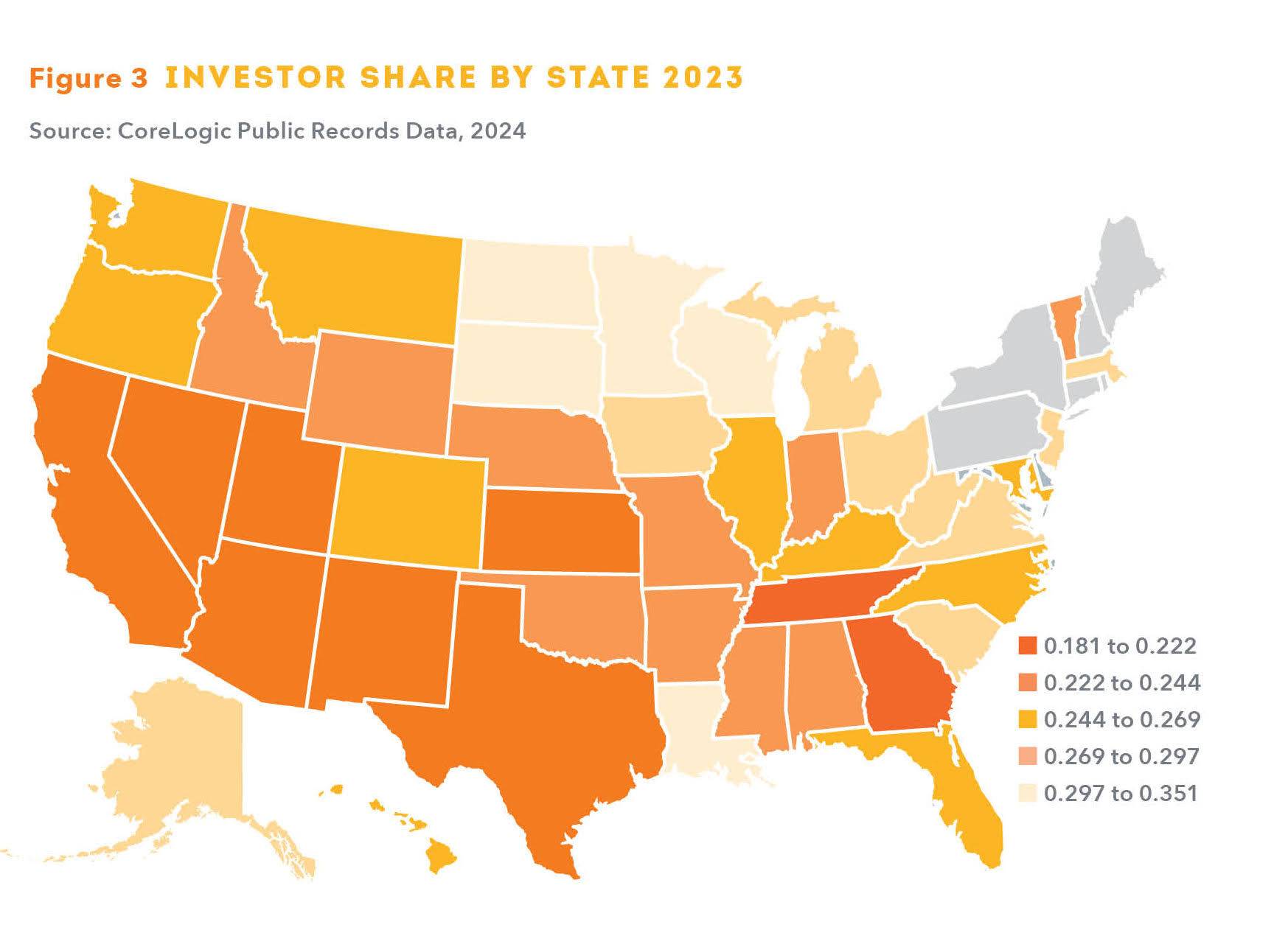Home Investor Share Inches Higher

Small Investors are Gradually Regaining Their Market Share
By Thomas Malone
The high U.S. home investor share seen over the past two years nudged up higher to close out 2023. In December, the share of single-family purchases that were made by investors hit 28.7%, an all-time high in CoreLogic’s data that dates to 2010.
This was a clear rise over the Fall share and raises the possibility that the share could rise above 30% in early 2024.
Figure 1 shows the share of home purchases made by investors since January 2019. In 2019 and 2020, the investor share never went above 20%, but in 2021 this share leaped up, and investors have made roughly a quarter of all single family purchases in each year since.
Though the investor surge began in the low interest rate environment, it has persisted throughout all interest rate increases, and is not showing anything that would indicate it will return drop back below 20% soon.

Figure 2 illustrates the number of U.S. home purchases made by investors and non-investors through December 2023. All these numbers are well below the levels investors purchased at in the previous 2 years, where investors made more than 100,000 purchases in each month.
Notable in Figure 2 is the large drop in owner-occupied purchases, down about 200,000 purchases a month from the levels seen from 2020 to 2022. This is our earliest snapshot of how different types of buyers might react to rates above 7% and shows an early sign that investors may be the more resilient group. Small investors make up most of the market

Figure 3 shows that throughout 2023, mega-investors (those that own 1,000 or more properties) and large investors (those that own 100 to 999 properties) have each held market shares of about 10%. Medium investors (those that own 10 to 99 properties) made up about 35% of the market, and small investors (those that own 3 to 9 properties) were the remaining 45%.
Though we are seeing an uptick in investor share, this is masking what is really a cold market. Flippers are buying at rates that are well below their pre-pandemic levels, and large/mega-investors have stopped their spending sprees. Small investors are gradually regaining their market share, but still are only buying at their pre-pandemic levels. Interestingly, it may be the low rates of 2020-22 might be bringing new ‘Mom and Pop’ investors into the market. The low rates of this period let a huge number of existing homeowners refinance their mortgage to more favorable terms, raising the chances that they rent out their existing home when they move, rather than sell. This is happening while rising rates and prices push potential first time buyers who cannot make a down payment back to the rental market.















